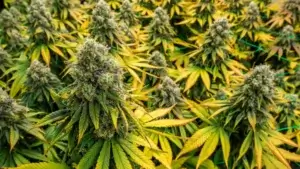Definition:
An autoflower ( noun ) is a type of cannabis plant that begins to flower automatically based on age, rather than being dependent on specific light cycles, unlike photoperiod cannabis plants.
Purpose and Usage:
Autoflower plants are popular among cultivators for their rapid growth cycle, small size, and resilience, making them well-suited for home growers and those with limited space or time constraints.
How It Relates to Cannabis:
- Automatic Flowering: Autoflowers begin their flowering phase typically within 2-4 weeks, regardless of light exposure, simplifying the cultivation process.
- Shorter Growth Cycle: These plants mature quickly, often ready for harvest within 8-10 weeks from germination, allowing for multiple harvests in a year.
- Compact Size: Autoflowers tend to be smaller and more discreet than photoperiod plants, making them ideal for indoor or limited-space growing.
- Genetic Background: Autoflowering cannabis is usually bred from Cannabis ruderalis, a hardy species that developed in northern regions with less daylight, giving it a natural resilience to cold and pests.
Common Misconceptions:
- Lower Potency: While early autoflower varieties had lower THC levels, modern autoflowers have been bred to produce high-potency buds comparable to photoperiod strains.
- Cannot Be Trained: Some believe autoflowers cannot be trained due to their fast growth, but low-stress training (LST) is often successful with careful handling.
Alternatives:
- Photoperiod Cannabis: Photoperiod strains rely on a specific light-to-dark cycle to begin flowering, giving growers more control over the plant’s size and harvest time.
Importance of Autoflower:
Autoflowers have revolutionized home and small-scale cannabis cultivation by offering a simple, fast-growing option that doesn’t require complex light schedules. Their resilience and quick turnaround make them valuable for growers seeking a reliable harvest with less maintenance, thus expanding accessibility in cannabis cultivation.





